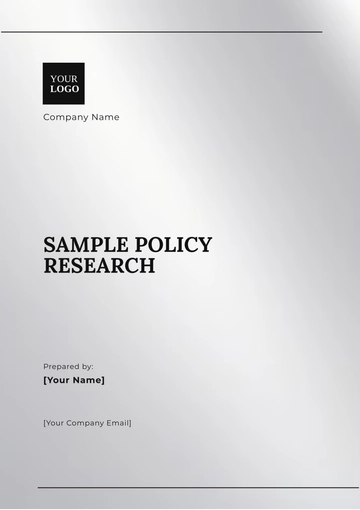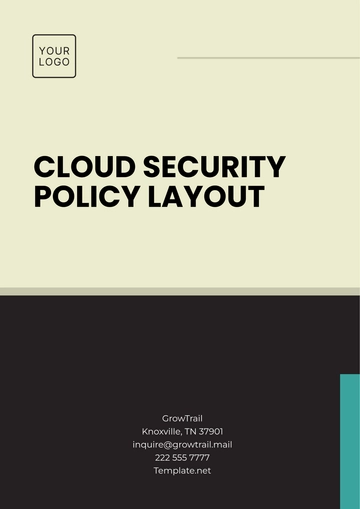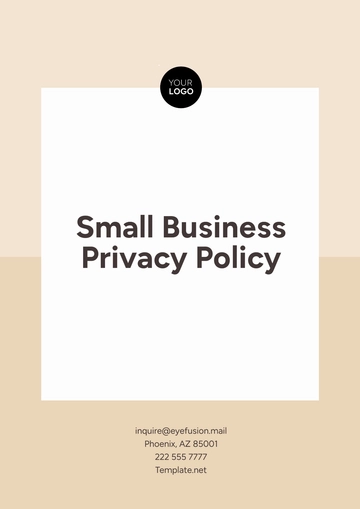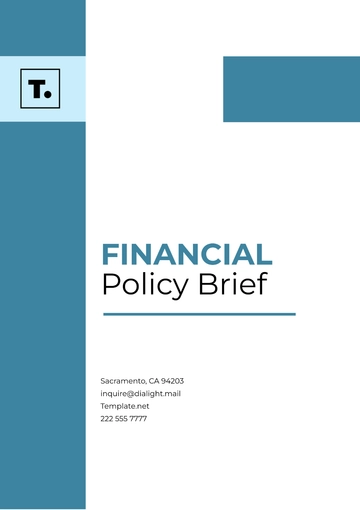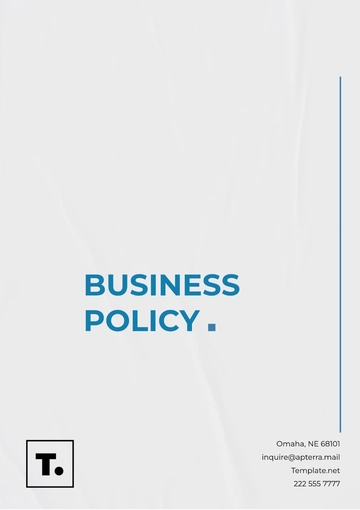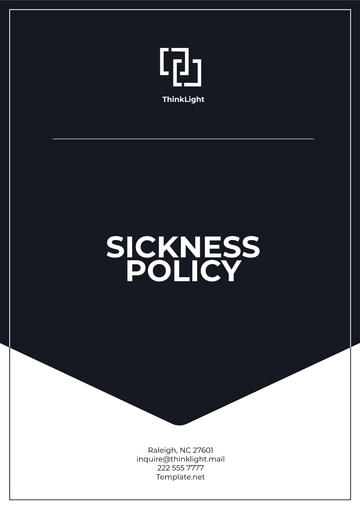Free Hotel Safety Policy

I. Introduction
A. Purpose of the Safety Policy
The Safety Policy of [Your Company Name] is designed to ensure the health, safety, and well-being of all guests, employees, and visitors. This policy outlines the procedures, responsibilities, and practices necessary to maintain a safe and secure environment. By implementing this policy, we aim to prevent accidents, injuries, and illnesses, thereby promoting a culture of safety and responsibility.
B. Scope and Applicability
This Safety Policy applies to all areas within [Your Company Name], including guest rooms, common areas, kitchens, administrative offices, and external premises. It is relevant to all employees, contractors, vendors, guests, and visitors. Adherence to this policy is mandatory, and non-compliance may result in disciplinary action.
C. Definitions of Key Terms
Safety: The condition of being protected from or unlikely to cause danger, risk, or injury.
Hazard: A potential source of harm or adverse health effect on a person or persons.
Incident: An unplanned event that results in injury, illness, or damage.
Emergency: A serious, unexpected, and often dangerous situation requiring immediate action.
II. General Safety Principles
A. Commitment to Safety
At [Your Company Name], safety is our top priority. We are committed to providing a safe environment for our guests and employees by adhering to the highest safety standards. Our goal is to prevent accidents and injuries through proactive measures and continuous improvement of our safety protocols.
B. Safety Responsibilities of Employees and Management
Employees' Responsibilities:
Follow all safety guidelines and procedures.
Report unsafe conditions or hazards immediately.
Participate in safety training programs.
Use personal protective equipment (PPE) as required.
Management's Responsibilities:
Provide a safe working environment.
Ensure that all safety equipment is maintained and operational.
Conduct regular safety inspections and audits.
Address safety concerns promptly and effectively.
C. Importance of Reporting Unsafe Conditions
Reporting unsafe conditions is a critical component of our safety policy. All employees are encouraged to report hazards or unsafe conditions immediately. This proactive approach helps to mitigate risks and prevent potential accidents. Reports can be made to supervisors, safety officers, or through the designated safety hotline.
III. Safety Training and Education
A. Mandatory Safety Training Programs
Safety training is essential for equipping employees with the knowledge and skills to perform their duties safely. [Your Company Name] requires all employees to undergo mandatory safety training programs tailored to their specific roles. Training programs include but are not limited to fire safety, emergency response, first aid, and proper use of PPE.
B. Frequency and Types of Training
Training sessions are conducted on a regular basis to ensure that all employees are up-to-date with the latest safety practices. The following table outlines the frequency and types of training provided:
Training Type | Frequency | Target Audience |
|---|---|---|
Fire Safety | Annually | All employees |
Emergency Response | Bi-annually | All employees |
First Aid | Annually | Selected staff |
PPE Usage | Upon hire and as needed | Relevant employees |
Hazard Communication | Annually | All employees |
C. Documentation and Record Keeping of Training
All safety training sessions are documented and records are maintained in the company’s safety management system. Documentation includes the date of training, names of participants, topics covered, and the trainer’s details. These records are essential for compliance and continuous improvement of our safety programs.
IV. Emergency Preparedness and Response
A. Emergency Procedures and Protocols
In the event of an emergency, [Your Company Name] has established procedures and protocols to ensure a swift and organized response. Employees are trained to handle various types of emergencies, including fires, medical incidents, and natural disasters. Detailed emergency plans are available in all departments and are reviewed regularly.
B. Evacuation Plans
Evacuation plans are crucial for ensuring the safe and orderly evacuation of guests and staff during emergencies. Evacuation routes and assembly points are clearly marked throughout the premises. The following table provides an overview of key evacuation details:
Evacuation Area | Route Description | Assembly Point |
|---|---|---|
Guest Rooms | Use the nearest exit, follow signs | Main parking lot |
Kitchens | Exit through back door, follow signs | Staff parking area |
Offices | Use nearest exit, follow signs | Front lawn |
Common Areas | Use nearest exit, follow signs | Designated outdoor area |
C. Emergency Contact Information
Emergency contact information is prominently displayed in all areas of the hotel. This includes contact numbers for local emergency services, internal safety officers, and management. Employees are trained to use this information promptly and effectively in case of an emergency.
D. Regular Drills and Exercises
To ensure preparedness, [Your Company Name] conducts regular emergency drills and exercises. These drills simulate various emergency scenarios to test the effectiveness of our response plans and to familiarize employees with their roles and responsibilities. Drills are evaluated, and any areas for improvement are addressed promptly.
V. Fire Safety
A. Fire Prevention Measures
Preventing fires is a key aspect of our safety policy. [Your Company Name] implements stringent fire prevention measures, including regular maintenance of electrical systems, safe storage of flammable materials, and prohibition of smoking in non-designated areas. Employees are trained to recognize fire hazards and take appropriate actions to mitigate them.
B. Fire Detection and Alarm Systems
Our hotel is equipped with state-of-the-art fire detection and alarm systems. Smoke detectors, fire alarms, and sprinkler systems are installed throughout the premises. These systems are tested and inspected regularly to ensure they are functioning correctly. Employees are trained to respond immediately to any alarm activation.
C. Fire Evacuation Procedures
In the event of a fire, it is essential to evacuate the building quickly and safely. Fire evacuation procedures are clearly outlined and communicated to all employees and guests. These procedures include:
Immediate Response: Upon hearing the fire alarm, stop all activities immediately.
Evacuation Routes: Follow the designated evacuation routes, avoiding elevators.
Assisting Others: Assist guests and colleagues who may need help evacuating.
Assembly Points: Proceed to the designated assembly points and await further instructions.
D. Maintenance and Inspection of Fire Safety Equipment
All fire safety equipment, including extinguishers, alarms, and sprinkler systems, is subject to regular maintenance and inspection. This ensures that all equipment is in optimal working condition and ready for use in an emergency. Maintenance logs are kept to track inspections and any necessary repairs or replacements.
VI. Health and Hygiene
A. Personal Hygiene Standards
Maintaining high standards of personal hygiene is essential for the health and safety of both guests and employees. [Your Company Name] enforces strict hygiene protocols, including regular handwashing, use of hand sanitizers, and appropriate grooming standards. Employees working in food preparation and housekeeping are required to follow additional hygiene practices to prevent contamination.
B. Handling of Hazardous Materials
Handling hazardous materials safely is a priority to prevent accidents and health risks. All hazardous materials, such as cleaning agents and chemicals, are stored in designated areas and used according to manufacturer instructions. Employees handling these materials receive specialized training on proper usage, storage, and disposal.
C. Procedures for Reporting Illnesses and Injuries
Employees are required to report any illnesses or injuries immediately to their supervisor or the designated health officer. Prompt reporting ensures that appropriate medical attention is provided and helps prevent the spread of contagious illnesses. Incident reports are documented and reviewed to identify any potential hazards and implement corrective actions.
D. First Aid and Medical Response
[Your Company Name] is equipped with first aid kits and medical supplies in key locations throughout the hotel. Selected staff members are trained in basic first aid and CPR to provide immediate assistance in case of medical emergencies. Emergency contact information for local medical services is readily available, and employees are trained to respond quickly and effectively.
VII. Security Measures
A. Access Control Procedures
At [Your Company Name], we prioritize the security of our guests and staff through stringent access control procedures. Access to guest rooms, administrative offices, and restricted areas is regulated to prevent unauthorized entry. Employees are issued identification badges that must be worn at all times while on duty. Guest access is controlled through key cards, which are programmed specifically for their stay and deactivated upon checkout.
Our front desk staff are trained to verify the identity of guests during check-in, ensuring that only registered guests receive access to their assigned rooms. Additionally, access to critical areas such as the hotel's financial offices, IT rooms, and storage facilities is restricted to authorized personnel only.
B. Surveillance and Monitoring Systems
To enhance security, [Your Company Name] employs a comprehensive surveillance system. CCTV cameras are strategically placed throughout the hotel premises, including entrances, hallways, common areas, parking lots, and restricted zones. These cameras operate 24/7 and are monitored by our security team to detect and respond to any suspicious activities promptly.
Regular maintenance and checks are performed on all surveillance equipment to ensure optimal functionality. Footage from the cameras is stored securely and can be reviewed when necessary for investigations or audits.
C. Guest and Staff Identification Protocols
For the safety and security of everyone within our premises, strict identification protocols are in place. Guests are required to present valid identification during check-in, and their details are recorded in our system. Staff members must display their identification badges at all times, making it easy to distinguish between employees and visitors.
In case of lost or stolen badges, staff must report immediately to their supervisor or the security office. Temporary badges are issued to authorized visitors and contractors, who are accompanied by a hotel representative while on the premises.
D. Handling Suspicious Activities
Any suspicious activity observed by staff or reported by guests is taken seriously. Our security team is trained to respond swiftly and discreetly to such reports. They conduct thorough investigations and take appropriate actions, including notifying local law enforcement if necessary. A log of all reported incidents and actions taken is maintained to track patterns and improve our security measures.
VIII. Workplace Safety
A. Safe Use of Equipment and Machinery
Ensuring the safe use of equipment and machinery is paramount to preventing workplace accidents. [Your Company Name] provides comprehensive training to employees on the proper operation and maintenance of all equipment they use. This includes kitchen appliances, housekeeping tools, and office machinery.
Regular inspections and maintenance schedules are followed to keep all equipment in good working condition. Employees are encouraged to report any malfunctioning equipment immediately to prevent accidents and ensure timely repairs.
B. Housekeeping and Maintenance Standards
Maintaining a clean and orderly environment is crucial for safety. Our housekeeping staff follows strict protocols to ensure all areas of the hotel are clean and free from hazards. Spills are cleaned promptly, and wet floor signs are used to warn guests and staff of potential slip hazards.
Maintenance staff conducts regular inspections of the building's infrastructure, including electrical systems, plumbing, and HVAC systems. Any identified issues are addressed immediately to prevent accidents and ensure the safety and comfort of our guests and staff.
C. Ergonomics and Manual Handling
To minimize the risk of musculoskeletal injuries, [Your Company Name] emphasizes the importance of ergonomics and safe manual handling practices. Workstations are set up to promote good posture and reduce strain. Employees who perform manual tasks, such as lifting and carrying, receive training on proper techniques to avoid injuries.
Adjustable equipment and tools are provided to accommodate different body types and tasks, ensuring comfort and safety for all employees. Regular ergonomic assessments are conducted to identify and address any potential issues.
D. Personal Protective Equipment (PPE) Requirements
Depending on their roles, employees may be required to use personal protective equipment (PPE) to ensure their safety. This includes items such as gloves, masks, aprons, and safety goggles. [Your Company Name] provides all necessary PPE and ensures that employees are trained in its correct usage and maintenance.
PPE is inspected regularly, and any damaged or worn-out items are replaced promptly. Employees are responsible for wearing their PPE as required and reporting any issues to their supervisors.
IX. Environmental Safety
A. Waste Management and Disposal
Effective waste management is essential to maintain a safe and healthy environment. [Your Company Name] follows strict protocols for the segregation, collection, and disposal of waste. Different types of waste, such as general waste, recyclables, and hazardous waste, are separated at the source and disposed of according to local regulations.
Waste bins are strategically placed throughout the hotel, and their contents are collected regularly to prevent overflow and contamination. Staff are trained on proper waste handling procedures to minimize health risks and environmental impact.
B. Chemical Safety and Handling
The safe handling and storage of chemicals are critical to preventing accidents and health hazards. All chemicals used in cleaning, maintenance, and other operations are stored in designated areas, clearly labeled, and used according to manufacturer instructions. Safety Data Sheets (SDS) for all chemicals are readily available to employees.
Training is provided on the proper handling, usage, and disposal of chemicals. Employees are required to wear appropriate PPE when handling chemicals and to follow all safety protocols to prevent exposure and accidents.
C. Energy Conservation Measures
[Your Company Name] is committed to sustainable practices, including energy conservation. We implement measures such as energy-efficient lighting, automated climate control systems, and regular maintenance of electrical appliances to reduce energy consumption.
Guests are encouraged to participate in our energy conservation efforts by using towels and linens multiple times before requesting replacements and turning off lights and appliances when not in use. These efforts not only reduce our environmental impact but also promote a culture of sustainability.
D. Pest Control Procedures
Pest control is an integral part of maintaining a safe and hygienic environment. [Your Company Name] employs a proactive pest management program, including regular inspections and treatments by licensed pest control professionals. Preventive measures such as sealing entry points, proper waste management, and maintaining cleanliness help minimize the risk of infestations.
Staff are trained to identify signs of pest activity and report any sightings immediately. Prompt action is taken to address any issues and prevent recurrence.
X. Incident Reporting and Investigation
A. Procedures for Reporting Incidents and Accidents
All incidents and accidents, no matter how minor, must be reported immediately to ensure proper documentation and investigation. Employees can report incidents to their supervisors, the designated safety officer, or through the company’s incident reporting system.
The incident report should include the date, time, location, details of the incident, and any witnesses. Prompt reporting allows for timely investigation and implementation of corrective measures to prevent future occurrences.
B. Investigation and Documentation of Incidents
Once an incident is reported, a thorough investigation is conducted to determine the cause and identify any contributing factors. The investigation team, led by the safety officer, gathers evidence, interviews witnesses, and reviews any relevant documentation.
A detailed incident report is prepared, outlining the findings, root cause analysis, and recommended corrective actions. This report is reviewed by management and shared with relevant stakeholders to ensure transparency and accountability.
C. Corrective and Preventive Actions
Based on the findings of the investigation, corrective actions are implemented to address the immediate cause of the incident. Preventive actions are also identified to mitigate the risk of similar incidents in the future. These actions may include changes to procedures, additional training, or modifications to equipment or facilities. Follow-up audits are conducted to ensure that corrective and preventive actions are effective and that no further incidents occur.
D. Communication of Investigation Results
The results of incident investigations are communicated to all relevant parties, including employees, management, and any external stakeholders. This ensures that everyone is aware of the findings and the steps being taken to prevent future incidents.
Regular safety meetings and updates are held to discuss incident trends, share lessons learned, and reinforce the importance of safety in the workplace.
XI. Continuous Improvement
A. Regular Safety Audits and Inspections
To maintain high safety standards, [Your Company Name] conducts regular safety audits and inspections. These audits assess compliance with safety policies, identify potential hazards, and evaluate the effectiveness of safety measures.
The audit findings are documented, and any identified issues are addressed promptly. Regular inspections help ensure ongoing compliance and continuous improvement in our safety practices.
B. Safety Performance Metrics and Reporting
Safety performance is monitored through a set of key performance indicators (KPIs) that track incidents, near-misses, training completion rates, and other relevant metrics. These KPIs are reviewed regularly by management to assess the effectiveness of our safety programs and identify areas for improvement.
Performance reports are prepared and shared with all employees, highlighting achievements, areas for improvement, and any changes to safety policies or procedures.
C. Employee Feedback and Participation in Safety Programs
Employee involvement is crucial to the success of our safety programs. [Your Company Name] encourages employees to provide feedback on safety issues, participate in safety committees, and contribute to the development of safety initiatives.
Regular surveys and suggestion programs are used to gather employee input, and their contributions are valued and incorporated into our continuous improvement efforts.
D. Review and Revision of Safety Policy
Our Safety Policy is reviewed and updated regularly to ensure it remains relevant and effective. This review considers changes in regulations, industry best practices, and feedback from employees and stakeholders. Revisions are communicated to all employees, and training is provided to ensure everyone is aware of any changes and their implications.
XII. Compliance and Enforcement
A. Legal and Regulatory Requirements
[Your Company Name] complies with all applicable local, state, and federal safety regulations. We stay informed about changes in legislation and ensure our policies and practices are aligned with current requirements. Regular audits are conducted to ensure compliance, and any identified non-compliance issues are addressed promptly.
B. Consequences of Non-Compliance
Non-compliance with our safety policies and procedures is taken seriously and may result in disciplinary action. Consequences for non-compliance range from retraining and verbal warnings to suspension or termination, depending on the severity of the violation. Employees are made aware of the importance of compliance and the potential consequences of failing to adhere to safety policies.
C. Roles and Responsibilities for Enforcement
Enforcing safety policies is a shared responsibility. Supervisors, managers, and the safety officer play key roles in monitoring compliance, conducting inspections, and addressing any safety concerns.
Employees are responsible for following safety procedures and reporting any issues. Management provides the necessary resources and support to ensure effective enforcement of safety policies.
D. Commitment to a Safe and Secure Environment
At [Your Company Name], our commitment to safety is unwavering. We strive to create a safe and secure environment for our guests, employees, and visitors. By adhering to our Safety Policy, we ensure that safety is a core value and an integral part of our operations.
Our continuous efforts to improve safety practices, combined with the active participation of all employees, help us maintain the highest standards of safety and well-being for everyone at [Your Company Name].
- 100% Customizable, free editor
- Access 1 Million+ Templates, photo’s & graphics
- Download or share as a template
- Click and replace photos, graphics, text, backgrounds
- Resize, crop, AI write & more
- Access advanced editor
Implement guidelines with Template.net's Hotel Safety Policy Template. This customizable and editable template, accessible through the Ai Editor Tool, helps you draft comprehensive safety policies. Personalize it to include specific safety measures and regulations. Ensure clear and effective communication to promote a safe environment for guests and staff within your hotel.
You may also like
- HR Policy
- Restaurant Policy
- Company Policy
- Accounting Policies and Procedures
- Website Policy
- Privacy Policy
- Safety Policy
- School Policy
- IT and Software Policy
- Law Firm Policy
- Construction Policy
- Interior Design Policy
- Travel Agency Policy
- Education Academic Policy
- Security Policy
- Real Estate Policy
- Expense Policy
- Software Policy
